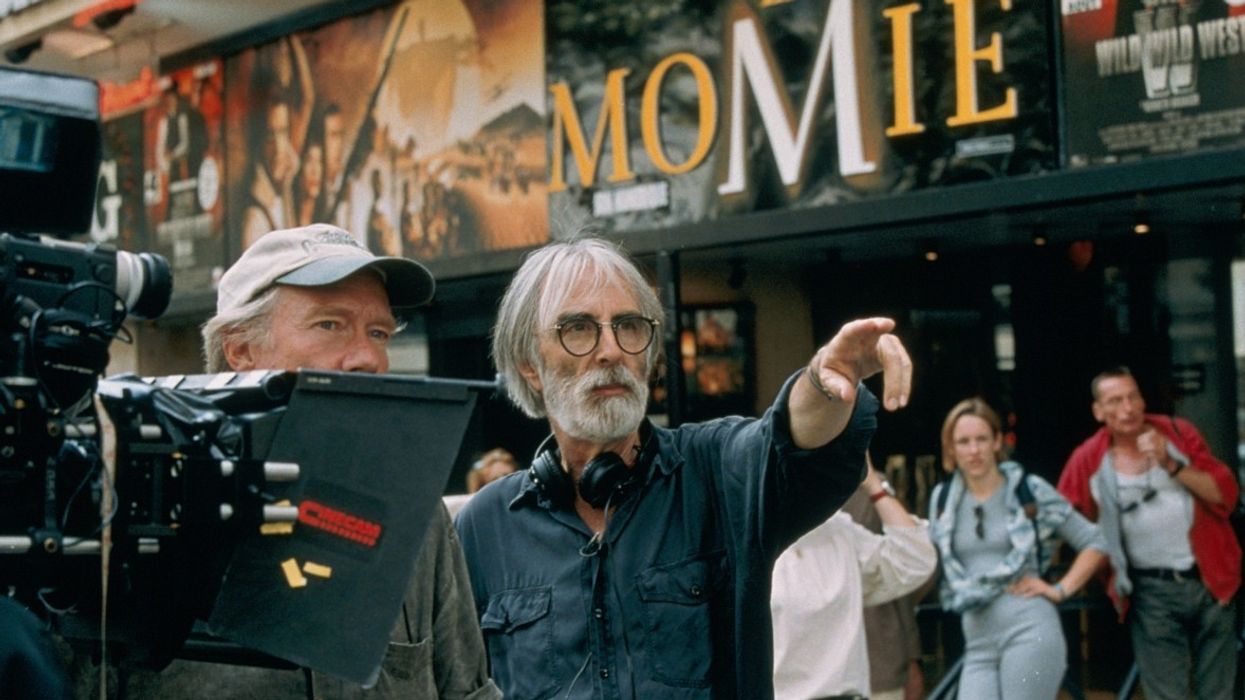Watch: How Michael Haneke Masters the Art of the Very Long Take
Here's why button-pushing Austrian filmmaker Michael Haneke chooses not to cut.

Starting his career in 1970s German television, Micahel Haneke has made 16 films since 1989. In the U.S., he first became more well known for Funny Games, an English remake of his own film, with action moved from Austria. He rose to further acclaim here in 2012 with Amour, which was nominated for two Academy Awards. The quality common to all his work, according to an essay on the director from n+1, is that his films are “'taxonomic': [Haneke's films] examine the possibilities of contemporary (haute) bourgeois life and consistently shows its protagonists to be at best trapped and ineffectual and at worst, much worse."
"In a film, you're constantly manipulating everything, but at least you can eliminate this kind of manipulation."
Haneke's films are populated by unhappy families, lonely music teachers, adolescents—all comfortably middle-class, all seriously troubled in some way. He directs with great skill and an immense thoughtfulness. In this clip, he discusses the idea of the long take, and, specifically, the so-called sequence shot, which is a long take that covers an entire scene, rather than just one section.
Haneke says, about his affinity for shooting with these takes: "There are several advantages. First, you're not manipulating the timeframe. It's real time. In a film, you're constantly manipulating everything, but at least you can eliminate this kind of manipulation."
Furthermore, the director thinks that by shooting in long takes, it's easier for actors, because rather than cutting, resetting, and having them wait around, shooting in long takes provides a way to keep the actors in the scene, as it were. But his reasons aren't all practical: he also thinks these shots are just more pleasing to the eye, and they seem to fit his style, his weltanschauung, if you will.
The clip he dissects in the first video is from his acclaimed The Piano Teacher, but we could not find the germane clip, so here's something from another of his films, Code Unknown. The movie, which depicts the (mostly) disastrous encounters between people whose storylines collide and intertwine with each other in Paris, is a natural candidate for the sequence shot treatment, and indeed is composed of only these shots. (Also, NB, Haneke appears to be good at keeping all but the lowest-res clips offline, so all we could find was the trailer, which actually sits still enough to give a pretty good idea of what he's doing with regard to this technique.)
In this last video, the filmmaker describes how he arrived at the form the storyboards for Code Unknown would take, given the unusual action they're depicting (the traditional storyboard, after all, is built for to accommodate cuts every few seconds). These clips should give you a taste of Haneke's long takes and the philosophy behind them, but we definitely recommend watching his movies in full (most of which are available for streaming on MUBI) to really understand how the technique plays out.
Source: The Criterion Collection

 No Film School's coverage of
No Film School's coverage of 









